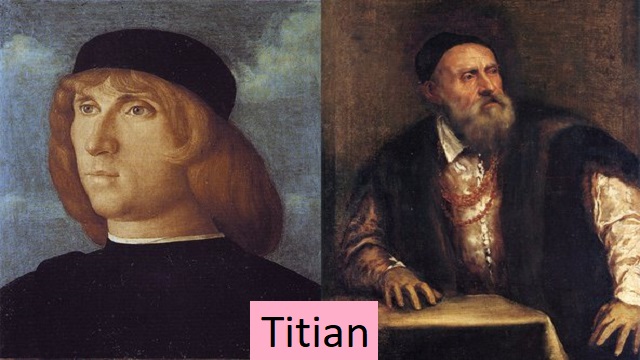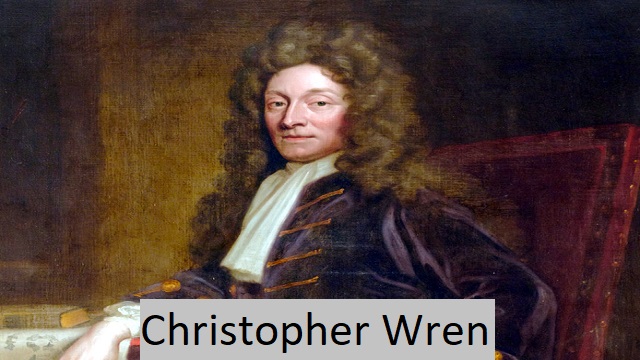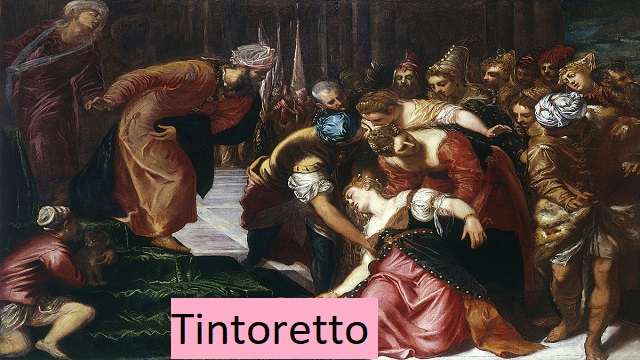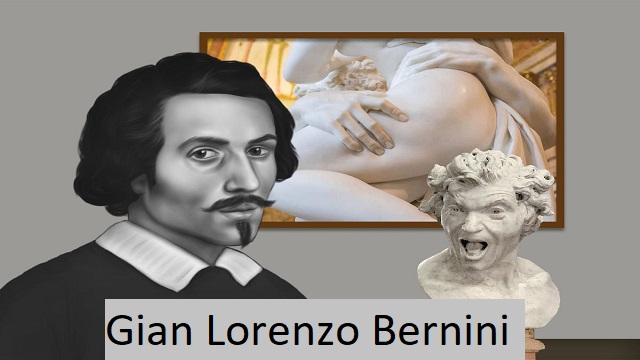Johannes Vermeer
Johannes Vermeer, Johannes created Jan (baptized October 31, 1632 in Delft, Holland; buried December 16, 1675 in Delft). Jan is a Dutch artist who created some of the most beloved and revered paintings in art history. Only about 36 of his paintings have survived, but these rare works make him one of the greatest treasures of the world’s finest museums. Vermeer began his career in the early 1650s, largely painting biblical and mythological scenes, but most of his later paintings – those for which he is best known – depict everyday life in interior settings. depicts the scenes of These works are distinguished by their lightness and purity of form, qualities that evoke a serene and timeless sense of dignity. He also painted cityscapes and allegorical scenes.
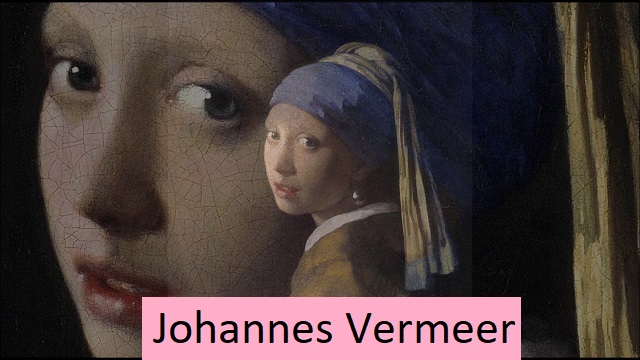
Early life
Delft, where Vermeer was born and began his artistic career, was a vibrant and prosperous place in the mid-17th century. Its prosperity was based on flourishing Delft porcelain factories, weaving mills and breweries. Within Delft’s city walls were picturesque canals and a large market square, surrounded by the impressive Town Hall and tall towers of the New Church. It was also a respected city with a long and impressive past. Fortified fortresses, city walls and medieval gates defended Delft for more than three centuries and provided refuge for William I, Prince of Orange, from 1572 until his death during the Dutch rebellion against Spanish rule in 1584.
Vermeer was baptized in New Kirk. His father, Reynier Jansz, was a weaver who produced a fine satin fabric called coffee. He also worked as an art dealer. By 1641, the family was prosperous enough to purchase a large house and inn on a market square called Mechelen. When his father died in October 1652, Vermeer inherited both the inn and the art dealership. By this time, however, Vermeer may have decided that he wanted to pursue a career as a painter.
In April 1653 Vermeer married Katherine Bolnes, a young Catholic woman from the so-called Babenhoek in Delft. Through this union he converted from his Protestant upbringing to Catholicism. Later that decade, Vermeer and his wife moved into the house of the mother of the bride, Maria Thins, who was a close relative of the Utrecht painter Abraham Blommert.
Technical training and early influence
Surprisingly little is known of Vermeer’s decision to become a painter. On 29 December 1653 he was registered as a master painter with the Delft Saint Luke Society, but the identity of his master or masters, the nature of his training and the course of his apprenticeship remain a mystery.
Delft records from the late 1640s or early 1650s do not mention Vermeer by name, so it is likely that, like many aspiring Dutch artists, he traveled to Italy, France or Flanders. He may also have trained at another art center in Holland, perhaps Utrecht or Amsterdam. In Utrecht, Vermeer met artists such as Gerrit van Honthorst, who were steeped in Caravaggio’s tradition of bold representation. In Amsterdam he would have been influenced by Rembrandt van Rien. His powerful contrasting effects reinforced the psychological intensity of his paintings.
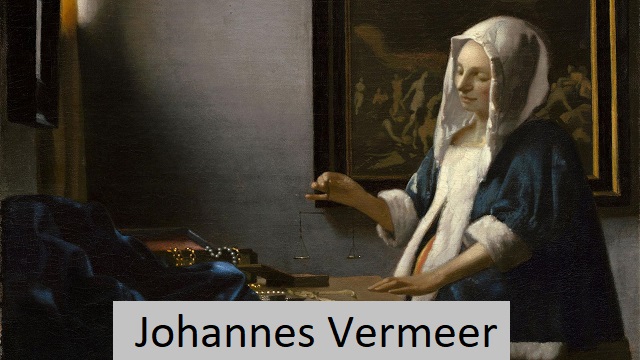
Stylistic features of both painting traditions – the Utrecht School and Rembrandt – can be found in Vermeer’s early biblical and mythological paintings such as Diana and Her Nymphs (c. 1653–1654; also known as Diana and Her Companions) and Christ. In the house of Maryam and Martha (m. 1654-1656). The most striking assimilation of the two traditions is evident in Vermeer’s The Procurator (1656). The subject matter of this mercenary’s love scene is taken from a painting by Utrecht School artist Dirk van Baburen of Vermeer’s mother-in-law, whose deep red and yellow colors and strong chiaroscuro effects are reminiscent of Rembrandt’s painting style. The shimmering figure on the left side of the composition is most likely a self-portrait of Vermeer in the guise of a prodigal son, a role also played by Rembrandt in one of his “gay company” scenes.
In the early 1650s, Vermeer may also have found much inspiration in his hometown of Delft, as the art underwent a rapid transformation. The most important artist in Delft at that time was Leonard Brammer, who not only produced small-scale history paintings, that is, morally uplifting representations of biblical or mythological subjects, as well as large murals for the court of the Prince of Orange. According to the documents, Bramah was a Catholic and was a witness at Vermeer’s wedding. Bramah seems to have been at least a supporter of the young artist, but there is no mention of him as Vermeer’s teacher.
Another important painter that Vermeer would have known during this period in Delft was Karl Fabricius, a former student of Rembrandt. Vermeer seems to have been deeply influenced by Fabrizio’s evocative paintings and innovative use of perspective. Poet Arnold Bohn said of Fabrizio’s tragic death in the Delft powder magazine explosion in 1654: “Vermeer brilliantly followed in [Fabrizio’s] footsteps.” However, although Vermeer was aware of Fabrizio’s work, there is no evidence that he studied with Fabrizio.
Whatever his early artistic training, in the late 1650s Vermeer began to paint scenes from everyday life. It is these genre images that he is most often associated with. Gerard Terborch, the Deventer artist who skilfully rendered textures in his depictions of domestic activities, may have encouraged Vermeer to pursue scenes from everyday life. Certainly, Terborch’s influence can be seen in one of Vermeer’s earliest genre paintings, Girl Reading a Letter by an Open Window (c. 1659), where he created a quiet place for a young woman to read a letter. But in contrast to Terborch’s signature dark interiors, Vermeer filled this beautifully private scene with brilliant light streaming in through open windows. The painting also shows Vermeer’s growing interest in illusionism, including the subtle reflection of a woman’s face in an open window, as well as the addition of a yellow-green curtain hanging from a rod across the top of the painting.
Vermeer’s interior scenes during this period were also influenced by the work of Pieter de Hooch, one of the leading genre painters in Delft at the time. De Hooch was adept at using perspective to create a light-filled interior or courtyard scene in which figures are appropriately placed. Although there is no record of a connection between Vermeer and de Hooch, it is very likely that the two artists were in close contact during this period. Vermeer’s View of the Houses of Delft (c. 1658; Also known as The Little Street) is one such work: like de Hooch’s court scene, Vermeer here depicts a world of domestic tranquility where women and children go about their daily lives in a soothing home environment.
The maturity of Johannes Vermeer
For about a decade from the late 1650s (considering his enormous fame and very short period of productivity) Vermeer created many great paintings, mostly of domestic scenes. I made it. No other contemporary Dutch artist has created a scene with such brightness and purity of color. The artist’s works are not imbued with a sense of timelessness and a sense of human dignity that rivals it.
At the height of his skill, Vermeer became famous in his hometown of Delft and in 1662 was appointed head of the painters’ guild. There are no known commissions for Vermeer’s paintings, but he seems to have sold works mainly to small clients in Delft during this and other periods. In the 20 years since Vermeer’s death, more than 21 of his paintings have been sold from the estate of Jacob Disius, a collector in Delft.
Themes
At the height of his career, Vermeer looked to paintings of women reading or writing letters, playing a musical instrument, or adorning themselves with jewelry, as ways to express a sense of inner harmony in everyday life, especially in the isolation of a private environment. room. In paintings such as Young Woman with a Jug (c. 1662), Woman with a Pearl Necklace (1662/65) and Woman in Blue Reading a Letter (c. 1663) used the laws of perspective and the placement of individual objects (chairs, tables, walls, maps, window frames) to create a sense of the underlying order of nature. Vermeer’s carefully chosen objects are never randomly placed. Their positions, proportions, colors and textures work harmoniously with his figures. Radiant light works across these images, further tying the elements together.
Vermeer’s Magnificent View of Delft (c. 1660-1661) similarly derives from his ability to transform images of the physical world into timeless and harmonious visual representations. In this masterpiece, Vermeer depicts Delft on the other side of the harbor. This is where the transport ship disembarked after navigating the inland waterways. Beyond the venerable ramparts and shadowed frieze of Delft’s massive gates, the setting sun illuminates the spire of the Nieuwe Kerk, the burial place of the Princes of Orange and the symbolic center of the city. Besides the use of light, the painting’s strength also lies in the larger, tangible illusion of reality. Buildings are given a physical presence in Vermeer’s evocative way, combining small dots of unaltered color with brushstrokes. I use a similar technique to suggest water reflections on the sides of the boat.
Vermeer drew inspiration from observations of everyday life in such mature works, but in spirit he remained a history painter striving to evoke abstract moral and philosophical ideas. This quality is especially evident in The Woman Who Keeps Balance (c. 1664). In this stunning image, a woman stands quietly in front of a table draped in a jewelry box draped with gold thread and pearls, while waiting for the balance of her tiny hand to settle. While the soft light entering the room and the delicate textures of the jewelry and fur-trimmed jacket are rendered realistically, the Last Judgment painting hanging on the back wall suggests that the artist interpreted the scene allegorically. As the woman stands next to the jewelry box and the judgment scene, her calm expression conveys understanding. He represents the understanding that one must maintain balance in one’s life and not allow temporary worldly treasures to obscure one’s ongoing spiritual concerns.
Surprisingly little is known about Vermeer’s attitude towards his role as an artist. However, the philosophical framework for his approach to his profession can be deduced from another work of this period, The Art of Painting (c. 1666/68). A large curtain was pulled back, as if a living painting had emerged, and Vermeer announced his allegorical intentions for this monumental and opulent work. The scene amidst allegorical depictions of Cleo, the muse of history, recognized by her attributes: a laurel wreath symbolizing honor and glory, a trumpet of fame, and a large book showing history. , depicts an elegantly dressed artist. . Vermeer juxtaposes Clio and the large wall map of Holland to show that the artist has brought fame and notoriety to her city and country through her knowledge of history and ability to paint sublime subjects. The painting was so important to Vermeer that his widow tried to keep it hidden from creditors even when the family was poor.
Working methodologies of Johannes Vermeer
Perhaps the most famous feature of Vermeer’s greatest paintings is their luminosity. Technical research has shown that Vermeer usually applied gray ground or ocher to his canvas or backing plate to create color harmony of his composition. He was keenly aware of the optical effects of color and created translucent effects by applying thin glazes over those undercoats or layers of opaque paint that defined his forms. His work includes the use of small dots of unmodulated color, such as buildings and water in the aforementioned “Landscape of Delft”, and foreground objects in other works such as Bread Crisps, resulting in l using small dots of unmodulated color. He seems to be imbued with sensations. The Milkmaid (c. 1660) and the chair end of Girl with a Red Hat (c.1665/66).
Vermeer’s diffuse highlights are similar to those of a camera obscura, and it’s a charming optic that works like a boxy camera. Camera hurdles of the 17th century produced images by allowing rays of light to enter the box through a small opening, sometimes fitted with a focusing tube and lens. Due to the device’s limited depth of field, the projected image contains many blurry areas surrounded by blurry highlights. Vermeer seems to have been fascinated by these visual effects and exploited them to give his paintings a greater sense of immediacy.
Some have argued that Vermeer planned the composition with this device and even traced the projected image onto the bottom glass on the back of the camera obscura. However, such a work process is almost impossible. Instead, Vermeer relied primarily on traditional perspective constructions to create a sense of space. For example, many of his interior shots have been found to have small holes at the vanishing points of his perspective system. Threads attached to pins guided him in the construction of orthogonal lines that defined the setbacks of floors, windows and walls. Vermeer carefully placed these vanishing points to highlight the main components of the painting. For example, in “Woman Holding a Scale,” it is found on the tip of the fingers of the hand holding the scale, reinforcing its overarching philosophical message. This attention to detail helps explain the small scale of Vermeer’s creative output, even during his most prolific period. He must have worked slowly, thinking carefully about the nature of his job and how he wanted to do it.
Read also: Edgar Degas


